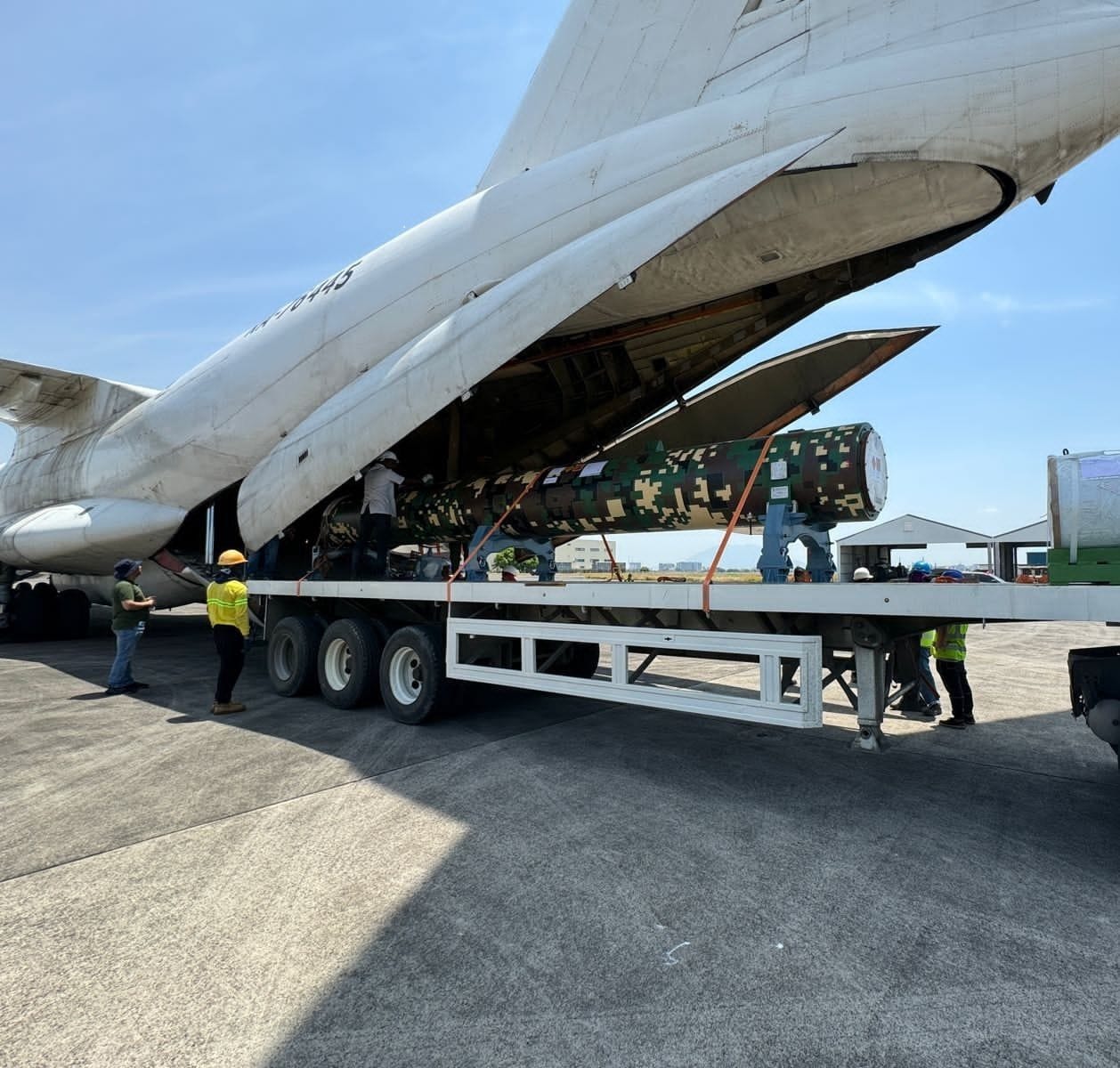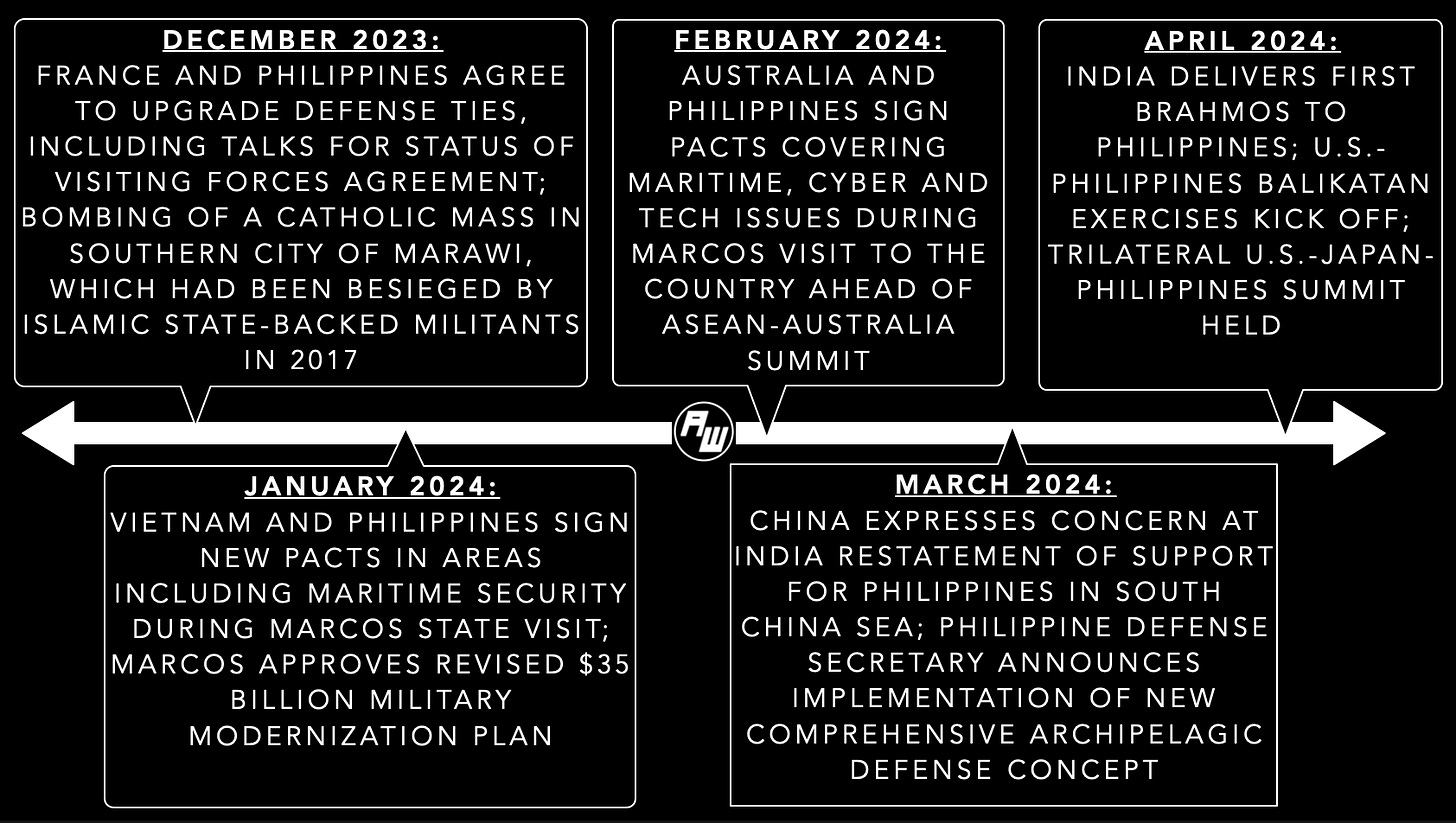First BrahMos Missile Delivery Enters India Philippines Orbit
New delivery highlights broader issues at play in India's security role, Philippine military modernization and geopolitics in and beyond the South China Sea.
India’s first BrahMos missile delivery to the Philippines highlights broader issues at play in India’s regional security role, Manila’s military modernization as well as regional geopolitics in and beyond the South China Sea.
WonkCount: 1,476 words (~7 minutes)
First BrahMos Missile Delivery Enters India Philippines Orbit
Background
The BrahMos missile delivery operationalizes a deal that has been years in the making. The Philippines contemplated acquiring a shore-based missile system like BrahMos from different sources for years before definitive interest was first publicized in late 20191. Back then, the Philippines was adjusting from its early pivot towards China under President Ferdinand Marcos Jr’s predecessor Rodrigo Duterte2. After some delay, a $375 million contract was initially inked in January 2022 for three batteries of the shore-based, anti-ship variant of the BrahMos. Delivery kickstarted when the Indian Air Force handed the first batch of BrahMos supersonic cruise missiles to the Philippines on April 193.
Key Recent Developments in Philippine Defense Policy
The delivery also comes amid an active few weeks in the Philippines’ broader security networking in the Indo-Pacific (see snapshot timeline above). The Philippines is just about to kick off Balikatan, the largest exercise within its U.S. alliance that has increasingly been multinationalized4. Ahead of Balikatan, Manila said it would negotiate a new status of visiting forces agreement with New Zealand. This highlighted an effort to expand military pacts previously limited mainly to Australia and the United States, as has been the case with other partners recently such as Canada, France and Japan. Meanwhile, Washington also publicly unveiled a historic first deployment of its new Typhon midrange ground-based missile launcher in the Indo-Pacific to Northern Luzon5. Just the week prior, Manila, Washington and Tokyo announced joint drills in their first-ever trilateral summit, right after a quadrilateral drill along with Australia. These developments come amid consequential developments in Philippine defense policy in Q1 2024. They include a newly approved defense concept as well as movement on a delayed and revamped defense modernization program.
Significance
The BrahMos delivery is a boost for India’s regional defense role and Manila’s attempts to meet its security needs. Though India’s defense ties with the Philippines may get the most headlines, New Delhi has made broader inroads on this score in Southeast Asia within the past year. These include gifting a corvette to Vietnam and holding an inaugural trilateral maritime exercise with Indonesia and Australia. Such gains are tangible examples of India’s regional security role despite lingering doubts in some circles about its ability to deliver. For the Philippines, BrahMos gives it a new shore-based anti-ship missile program to help boost coastal defense, including against China’s South China Sea assertiveness. Officials have publicly billed this a landmark development in defense modernization6. They also privately recognize it needs to be integrated with other capabilities to maximize its utility even within the partial range it covers of Manila’s 200-nautical mile exclusive economic zone7.
The evolving Philippine approach to security partners including India is much better understood by looking at not just individual developments, but what Manila is doing across a wider set of alignments which the ASEAN Wonk team has been closely tracking (see table below for select touchpoints in areas that reveal the components of this wider approach).





